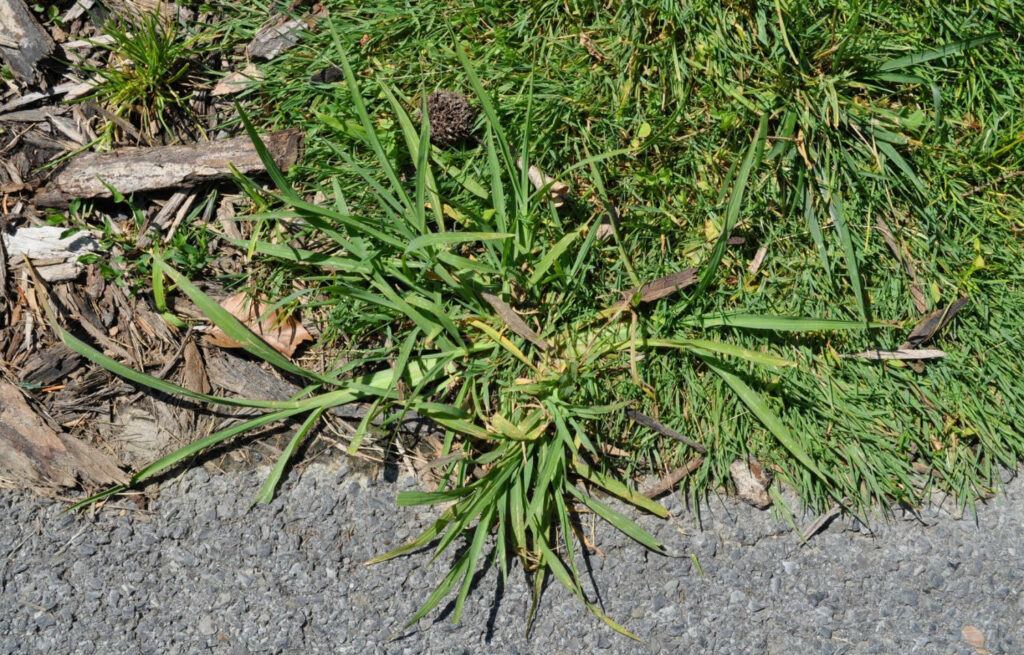Waterlogged Soil & Pre-Emergence Herbicides
go.ncsu.edu/readext?780139
en Español / em Português
El inglés es el idioma de control de esta página. En la medida en que haya algún conflicto entre la traducción al inglés y la traducción, el inglés prevalece.
Al hacer clic en el enlace de traducción se activa un servicio de traducción gratuito para convertir la página al español. Al igual que con cualquier traducción por Internet, la conversión no es sensible al contexto y puede que no traduzca el texto en su significado original. NC State Extension no garantiza la exactitud del texto traducido. Por favor, tenga en cuenta que algunas aplicaciones y/o servicios pueden no funcionar como se espera cuando se traducen.
Português
Inglês é o idioma de controle desta página. Na medida que haja algum conflito entre o texto original em Inglês e a tradução, o Inglês prevalece.
Ao clicar no link de tradução, um serviço gratuito de tradução será ativado para converter a página para o Português. Como em qualquer tradução pela internet, a conversão não é sensivel ao contexto e pode não ocorrer a tradução para o significado orginal. O serviço de Extensão da Carolina do Norte (NC State Extension) não garante a exatidão do texto traduzido. Por favor, observe que algumas funções ou serviços podem não funcionar como esperado após a tradução.
English
English is the controlling language of this page. To the extent there is any conflict between the English text and the translation, English controls.
Clicking on the translation link activates a free translation service to convert the page to Spanish. As with any Internet translation, the conversion is not context-sensitive and may not translate the text to its original meaning. NC State Extension does not guarantee the accuracy of the translated text. Please note that some applications and/or services may not function as expected when translated.
Collapse ▲As the days get longer and temperatures begin to warm, people are asking when to apply pre-emergent herbicide to control crabgrass and goosegrass in their lawns. Beyond the establishment of dense, healthy turfgrass, one of the most effective means of maintaining weed-free turf grass is utilizing well-timed pre-emergence herbicide applications. A general rule of thumb that is often used by homeowners is to make the pre-emergent application when the forsythia is at 50% of full bloom.
To be more scientific about making your application, you should monitor the soil temperature. Crabgrass begins to germinate when the 24-hour mean soil temperatures average about 54-55°F for 3-4 consecutive days. Applying a pre-emergence herbicide prior to crabgrass germination is critical to achieving maximum control.
According to Travis Gannon, NC State University Assistant Professor in the Crop & Soil Sciences Department, in recent years, target soil temperatures have occurred earlier than in previous years. For this reason, earlier pre-emergence herbicide applications have been recommended in the last several years. It’s also important to note that pre-emergence herbicides must receive rainfall or irrigation prior to germination and emergence to provide optimum efficacy (we all know this hasn’t been a limiting factor recently!).

Under normal growing conditions, common pre-emergence herbicides provide effective weed control when applied in our area in early- to mid-February. But our conditions have not been normal. 2020 ended as one of the wettest years on record and 2021 is off to a very wet start. As a result, soils in many areas have been saturated much of the winter. So, what are the impacts of this on pre-emergence herbicides?
Saturated soils may adversely affect the length of control provided by certain pre-emergence herbicides in saturated soils. Oxygen is depleted in the saturated soils and the anaerobic conditions can accelerate the breakdown of the herbicide, leaving lawns susceptible to weed breakthrough. Studies have shown that the half-life of certain pre-emergence herbicides can be reduced by up to 80% in saturated soils.
If your soils have been saturated for prolonged periods of time and you have made one application already, you might consider making another application to achieve best control. Remember to always read and follow the pesticide label directions.
If you have questions, give me a call at 704-283-3729 or email at dddillio@ncsu.edu.




